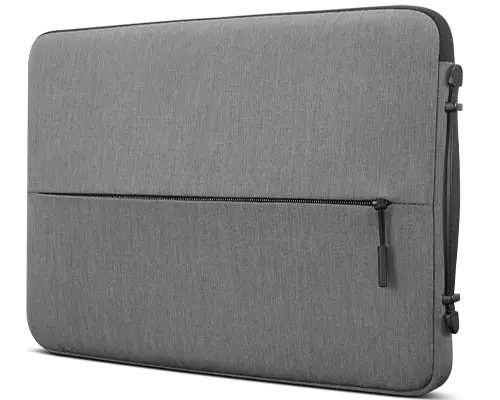99 Matching results
Sort by : Recommended
- Est Value$60.38$39.9933% offKey Details
- Compact ambidextrous design
- Ergonomic design with Villi painted grip
- Blue optical sensor, tracks on most surfaces
- Silent left/right keys with 2-way scroll wheel (up / down)
- 800 – 1600 - 2400 adjustable DPI
- Wireless connection via USB-C dongle
- Supports Lenovo Unified Pairing Receiver
- Rechargeable, 2 - 3 months use, 1.5 - 2 hours to fully charge (may vary based on usage)
- Programmable “Utility Button” on the side
- Default functions optimized for Teams calls
Use eCoupon ACCSAVINGSeCoupon limited to 10 unitsPrice Match GuaranteePart Number 4Y51C21216See LessCompare - Est Value$38.99$28.9925% offKey Details
Lightweight design is easy to transport and perfect for on-the-go pros
Large zippered front stash pocket for easy access to gear
Two water bottle pockets puts hydration at arm’s length
Large carry handle keeps you comfortable at all times
Contoured shoulder straps give you the support you need
Reflective accents enhance visibility when you’re on the move
Price Match GuaranteePart Number GX41L44751See LessCompare - Est Value$26.99$20.9922% offKey Details
Protective design that's armored with interior rubber bumpers on each corner to keep your laptop safe from accidental drops
Water-resistant and stylish polyester outer material for durability
Cushioned under zippers to protect from scratches
Additional zipper storage for accessories
Non-slip zipper puller for comfortable use
Price Match GuaranteePart Number GX41D07809See LessCompare - Est Value$120.94$72.9939% offKey Details
Teams open office certified, other UC platform optimized
Bluetooth 5.3 with dual connection
Plug and play with USB-A Bluetooth audio receiver
Three mic noise suppression technology to ensure superior call quality
~140g light weight design for all day comfort
Up to 31 hours of talk and 60 hours of playback
Double-sided boom microphone
Replaceable earcups
Customize features with Lenovo Accessories and Display Manager
Use eCoupon ACCSAVINGSeCoupon limited to 10 unitsPrice Match GuaranteePart Number 4XD1M80020See LessCompare
Shop Sale
High speed USB B to C Cables
Whether you use your computer equipment for business, personal, or both, the chances are that your computer needs to talk to other devices. In certain cases, your computer may be linked to a printer over the Wi-Fi network, or your gaming habit might be supported with an HDMI cable and adapter for Xbox 360 Gamestop. However, as computer equipment gets older, there can be compatibility issues between equipment. When this happens, you might need special adapters and cables for your equipment to work properly. Let us look at some of these cables, and how they are used.
Types of data and charging cables
There are different kinds of charging and data cables. These days, all of us think about the USB standard, which has been in use for over twenty years. However, there are still uses for older technology, and so technology companies still make a wide variety of these cables. For two pieces of equipment to communicate, they either need to connect via Wi-Fi or one of these cables. With that in mind, here are the options.
High speed USB B to C cables
If you have an older printer, chances are that it works on a USB B input for data transfer from your computer. In fact, most printers still have these and, unless your computer will connect over WiFi, you’ll need a USB B cable to print anything from your home printer. For most people, a USB B cable is referred to as a “printer cable.”
Until recently, printer cables were almost always the classic USB A format on the computer end. After all, USB C wasn’t popular yet, especially beyond mobile devices. Now, there are some computers that don’t have a USB (or simply “USB”) port, or they might have only one. At the same time, there are more USB C ports in new computers. USB C transfers data much faster than earlier USB standards, so some people might also choose to use high speed USB B to C cables to save time, especially on larger print jobs.
Fiber optic cables
Speaking of the new USB C standard, these USB C to USB C cables are also fiber optic cables. All of these, the term reminds us of a major internet service provider and its cable alternative. The reason why fiber optics are used for internet is that they transmit data very quickly, including internet capabilities, streaming content through Wi-Fi, and other purposes.
Because fiber optics are so fast, there’s an increasing use of fiber optic USB C to USB C cables in the gaming community. These are used to connect computers and gaming consoles with larger monitors or televisions. They help prevent lag in the game, supplying a better experience and largely eliminating the competitive disadvantage of slow systems. In other words, using these fiber optic cables you can avoid the problems associated with an HDMI cable and adapter for Xbox 360 Gamestop.
BNC cables
Another tool to ensure equipment communicates properly is the BNC cable. All of us would think they look like Coaxial cables, which are the connectors we use for cable television. BNC cables are similar, in that they send large data from one place to another, very quickly. For example, you might use BNC cables for a wired connection between surveillance/security cameras and the televisions you’re using to monitor the cameras.
Custom PC cables
Sometimes, an ordinary off the shelf product doesn’t work well for your purposes. This is especially true when you need to use a machine that’s obsolete technology. In particular, the user having old-fashioned slide decks, overhead projectors, microfilm readers, and other items. It’s a problem that exists both for individuals or families, and institutions.
When someone runs into this problem, one possibility is to use an adapter, especially if the connector types still exist. Occasionally, though, you might need to order custom PC cables that can give old technology new life. Here, you’ll indicate the types of connector you need, and then select the ideal length. In addition, you can get custom PC cables for especially long lengths that most manufacturers don’t make.
HDMI ARC cables
If you like to stream video on your computer, then watch it on your big screen TV, you might want an HDMI Arc cable. And the chances are that you’re looking hard for one, because most companies nowadays consider HDMI Arc cables and simple “HDMI cables” to be the same thing.
Why is there so much confusion? Originally, ARC was a high-speed kind of HDMI cable, but modern cables can manage the high speeds. When a device has HDMI Arc written on the HDMI port, it means that the cable needs to be high speed data capable. It’s essentially an obsolete marking that’s still used sometimes.
Mic cables
Whether you’re a musician or a public speaker, anyone who records sound likely needs mic cables. These days, with sophisticated audio editing software, all users record and complete their audio tracks using home computers or even laptops. In fact, the proliferation of audio publishing websites means that you don’t need a recording studio to distribute your single song or album.
Nowadays, there are two kinds of mic cables. One of them connects to amplifiers and professional recording equipment. The other kind uses a USB connector, such as USB A or USB C, to communicate with computers and digital devices. The trick is to figure out which kinds of cables will be compatible with your equipment.
RGB PC cables
The term RGB refers to “red, green, blue.” These cables carry analog picture signals, such as what you’d need for an old-school slide or overhead projector. Similarly, an RGB PC cable is an RGB cable that takes a digital computer signal and turns it into the analog instructions needed for the older equipment. In other words, these are what you use for obsolete equipment.
There’s another use for RGB PC cables, though: light cables. In this case, the cables are decorative, so you can show your friends your cool rig. Or, for that matter, make your computer stand out in your dorm or apartment. Finally, you can use these to enhance your graphics card function and overall “cool factor.” Just make sure you have space for the extra.
AC cables
These days, USB cables also function as AC cables because they deliver power to your devices. However, AC cables are actually the technical term for a power plug. You can find these on just about any device that doesn’t use USB for power, and many that do. For instance, computers use an AC cable to pull power from the wall, just like your alarm clock does. Even computers, like Lenovo, who use USB to charge the battery also have AC cables to bring electricity into the “brick” converter. In other words, they are one of the most ubiquitous cords around.
Micro USB cable and adapter
Lastly, there’s the Micro USB cable and adapter. Until USB C became common, Micro USB was the most common type of charger for cell phones and other small chargeable electronics. However, now that the cables are harder to find, few people with old Micro devices may want to get a Micro USB cable and adapter. In this case, you can switch the type C charging end into a Micro end to make it fit the old device.
Cable Product Features
Confused yet? There’s no question that there are many kinds of cables, especially when you consider the changes in technology. And while many devices are switching to USB C technology for most things, we’ll likely need the old technology for a long time to come.
So how do you know which cables you need? The easiest way to describe this is by saying the “male” connector goes into the “female” slot. So, the USB port on your computer is technically the “female” end. For connectors to be compatible, you must match the male and female types. So, a male USB C cable needs a female USB slot. Otherwise, you’d need to use an adapter that matches the two ends.
Of course, at the end of the day, all these cables have one major feature: they transport signals and, to certain extent, electricity from one device to another. Some only pull enough power to work, while others also help power or recharge the host device.
Power and data cable uses
As their name suggests, cables move power and data between devices. However, the practical implications of this change between business/home office and entertainment purposes.
· Business use and home office: connectors help to ease office communications. This can be sending documents to the printer, allowing a presentation to be projected onto a large screen, or even transfer data. Either way, they help keep the office working.
· Home and entertainment use: All people use connectors to stream a movie and watch it on a larger screen than their computer, usually a widescreen. Some activities, like a home karaoke contest or a private party, can also receive help from extras like a microphone cable. Various cables also help send information from one device to another or bring television/internet into the home.
There’s no question that there are a lot of cable types out there. Not only has the technology changed over the last decades, but some electronics manufacturers have proprietary cable types. Fortunately, if you know which kind of cables to use, it’s much less confusing. If all else fails, there are pictures of cable types online. Or, reach out to your information technology department.
Read More










